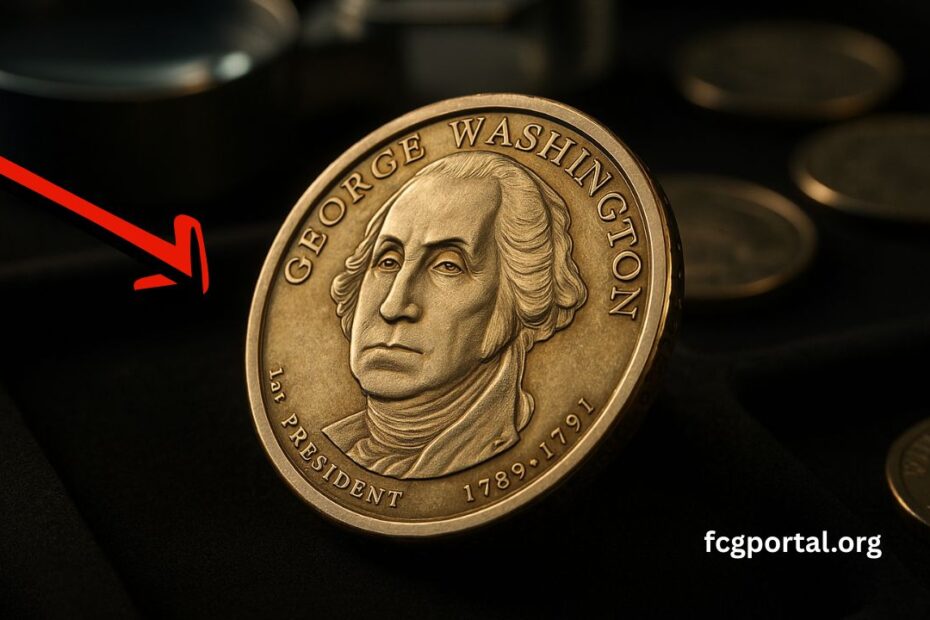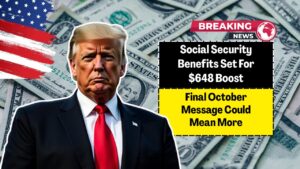If you’re a coin enthusiast or happen to stumble upon a George Washington Presidential dollar, there’s a chance it could be worth hundreds—if not thousands—depending on its rarity and condition.
This guide reveals how to identify rare George Washington dollar coins, key features to spot, and real-world values
Key Features that Determine Value
The George Washington dollar coin, first issued in 2007 as part of the Presidential $1 series, features an obverse portrait by Joseph Menna and the Statue of Liberty on the reverse. Its edge bears inscriptions like “E PLURIBUS UNUM,” “IN GOD WE TRUST,” mint mark, and year.
Coins without these edges—called “missing edge lettering” errors—are among the most sought-after by collectors.
Types of Valuable Variants and Errors
Several rare attributes can significantly boost a George Washington dollar coin’s value:
- Missing Edge Lettering (Godless Dollar): Coins that lack all edge inscriptions—often among the rarest and can sell for hundreds.
- Double Edge Lettering Error: Edge text appears twice—either overlapped or inverted—also valuable.
- Inverted Edge Lettering (Position A vs. B): Edge inscriptions oriented upside-down relative to the portrait (Position A) versus right-side up (Position B). Position A pieces are collectible even if not rare.
- “No Date” Edge Error: Entire edge inscriptions missing—often the most valuable error.
- Gold-Plated or Annealing Errors: Private plating or minting mistakes; typically carries novelty value rather than high collector value.
Real Value Estimates
| Error Type / Category | Typical Value (USD) |
|---|---|
| Circulated Standard (P/D Mint) | $1 – $2 |
| Uncirculated (MS60–MS65) | $2 – $10 |
| Satin Proof (SP67–SP69) | $10 – $30 |
| Proof (PR69–PR70 Deep Cameo) | $12 – $40 |
| No Date (Missing Edge Lettering) | $75 – $350+ |
| Double Edge Lettering Error | $50 – $150 |
| Inverted Edge Lettering Error | $25 – $90 |
| High-Grade Gold Dollar (MS67+) | ~$600; MS68 ~$4,250 (rare) |
In these values, the most prized are coins missing edge details—sometimes called “godless dollars”—and truly rare high-grade gold variants.
Step-by-Step Identification Guide
- Check the Edge
- Inspect for edge lettering: absence, double imprint, or inverted orientation are red flags.
- Determine Mint Mark & Condition
- Find the P (Philadelphia), D (Denver), or S (San Francisco Proof) marker on the edge.
- Grade condition: Circulated coins hold minimal value; Mint State (uncirculated) coins can be dozens of dollars.
- Look for Proof or Special Finishes
- Look for mirrored surfaces (Proof) or satin finishes; these warrant collector interest but not necessarily rare status unless coupled with detailed errors.
- Watch for Error Signs
- Double edge text, missing year or motto, or flipped lettering can signify value—especially early 2007 issues.
- Avoid Counterfeits
While most George Washington dollar coins are worth just their face value or modestly more, exceptional examples—especially those with missing or inverted edge lettering—can fetch hundreds.
Carefully inspect your coin’s edge, mint mark, and condition; high-graded or error-filled specimens can translate into real collector value. Need help checking a specific piece? Let me know!
FAQs
What makes a 2007 George Washington dollar coin rare?
Missing or misplaced edge lettering—like no inscriptions or double strikes—can elevate value significantly.
What is the worth of a rare error coin?
Depending on the error and condition, values range from $75 to over $350, and high-grade gold variants can fetch up to $4,250.
How can I verify if my coin is authentic and valuable?
Use a loupe to inspect details, compare to authentic references, and consider professional grading to confirm rarity and condition.



